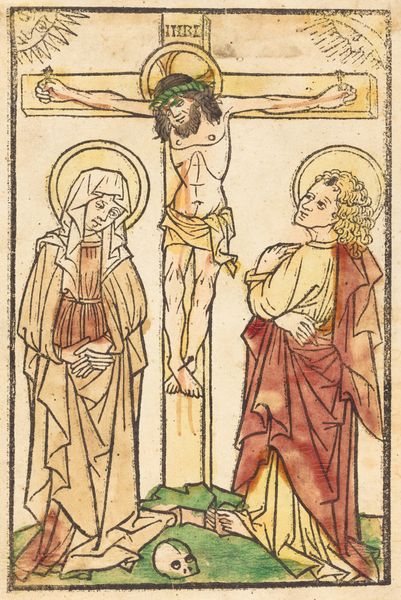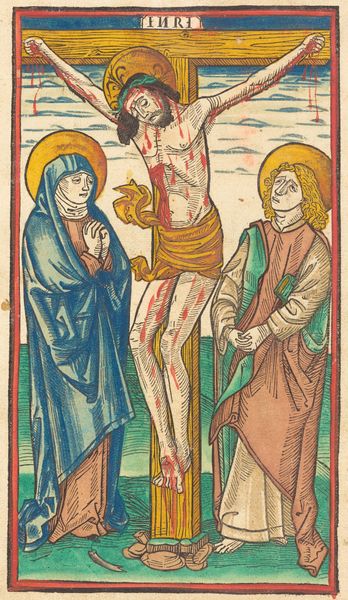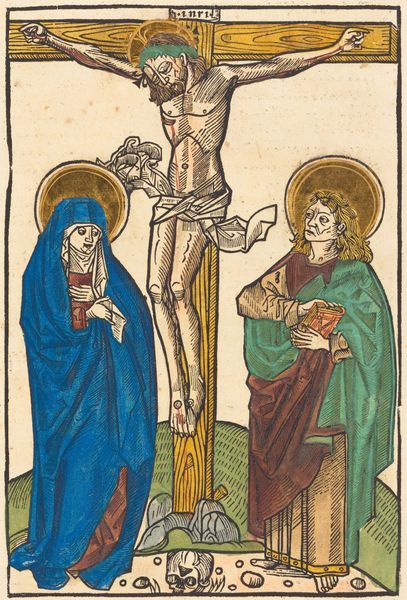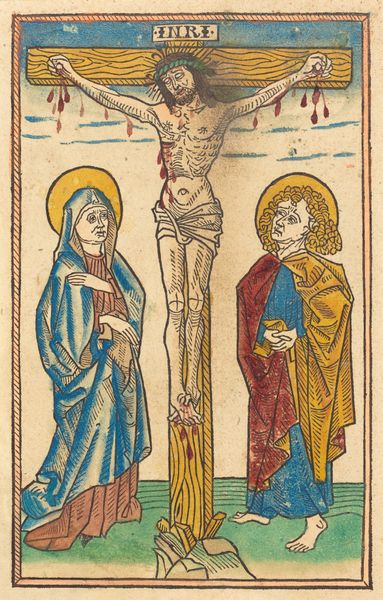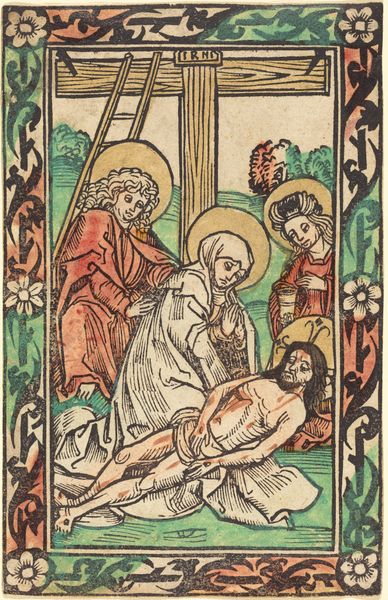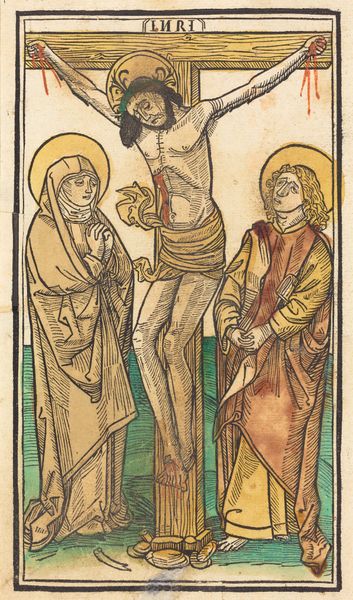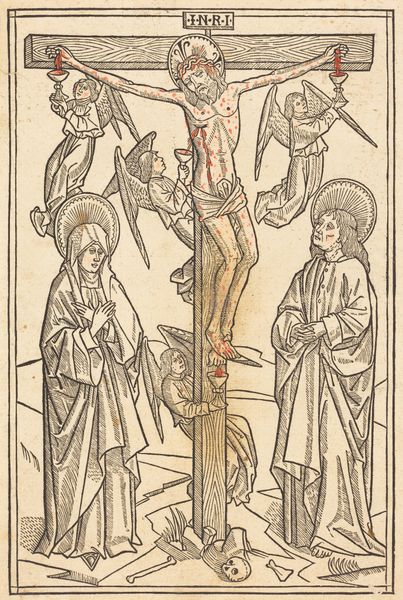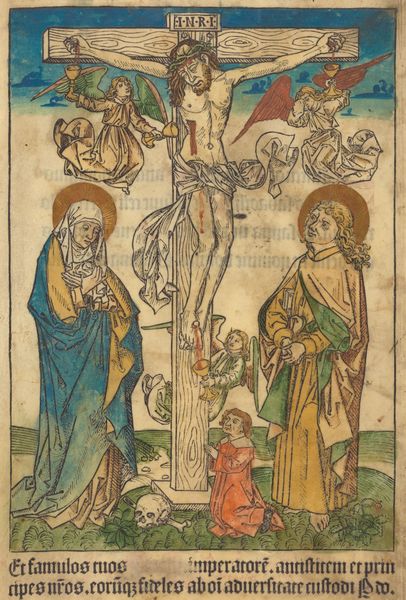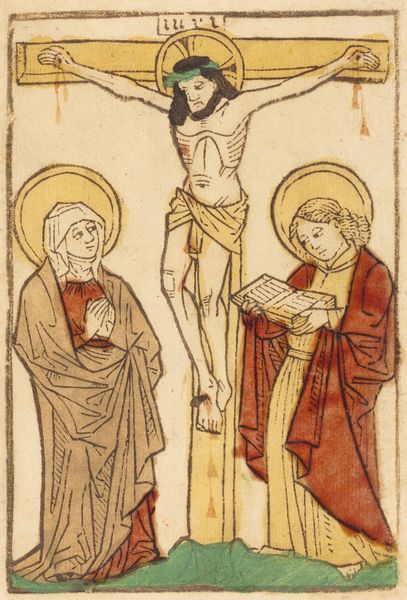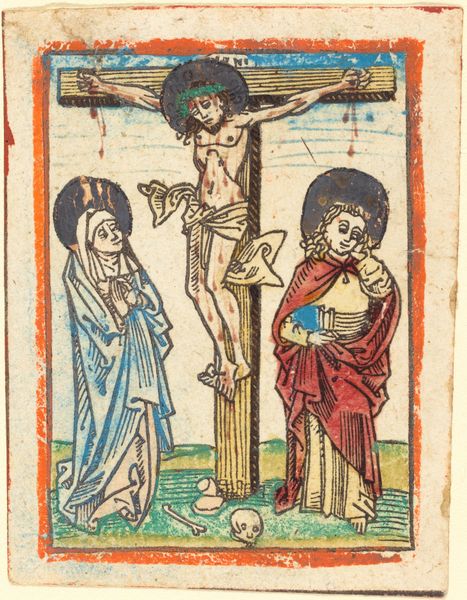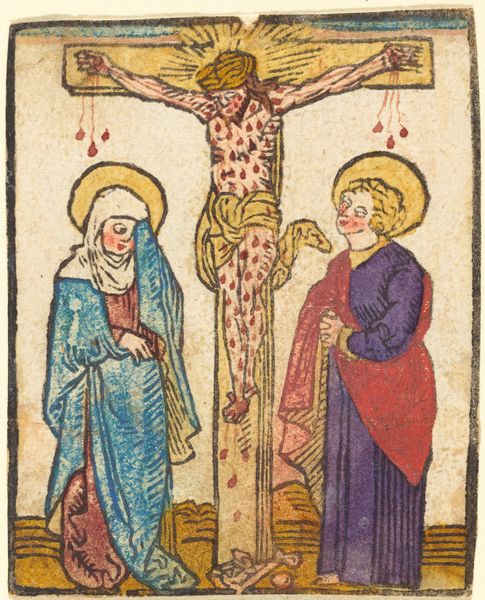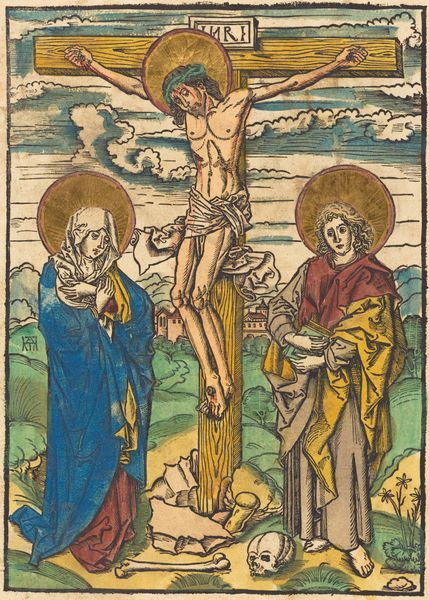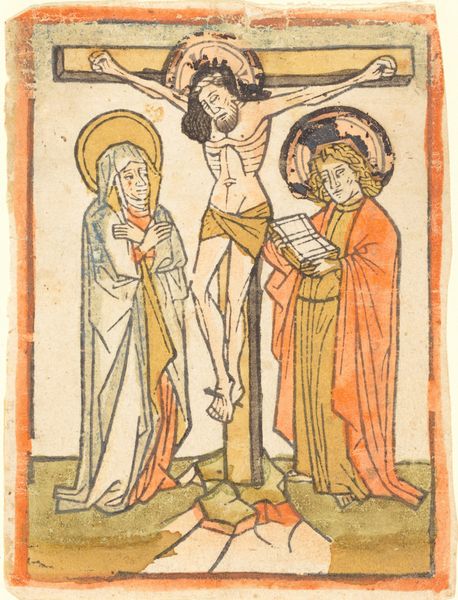
Christ Showing His Wounds to Peter, the Magdalene and the Good Thief 1480 - 1490
0:00
0:00
print, woodcut
#
portrait
#
narrative-art
# print
#
figuration
#
woodcut
#
history-painting
#
northern-renaissance
Copyright: National Gallery of Art: CC0 1.0
Editor: Here we have a woodcut from the late 15th century, "Christ Showing His Wounds to Peter, the Magdalene and the Good Thief," created by an anonymous artist. It has a certain rawness to it. What stands out to you about the work, and what does its materiality say about its creation? Curator: Well, this piece clearly reflects the material conditions of its production. Being a woodcut, it's inherently a repeatable image. This suggests a demand for accessible religious imagery, circulating beyond the elite. Notice the relatively simple, bold lines. The material constraints of woodcutting dictated this aesthetic; finer details were difficult to achieve, focusing instead on conveying the narrative efficiently. How does this method of reproduction impact its social value in your opinion? Editor: That makes sense. Because it's reproducible, does that affect its perceived value as a piece of "high art" compared to something painted? Curator: That's exactly it. Traditionally, the unique, handmade object held higher value within art historical narratives. But a materialist reading challenges that hierarchy. The value isn't just in the individual object, but also in its function: How did prints disseminate ideas? How did the labour involved in their creation shape their visual language? This wasn’t about individual genius as much as it was about collective production and consumption within a specific economic system. The creation of multiple pieces inherently devalues the idea of one specific artwork being some precious thing. Does noticing the way Christ’s wounds are rendered differently because of it also affect the image, in your view? Editor: I suppose so. It makes me think about how accessible religious images shaped popular piety at the time, almost like a form of mass media. And it makes you consider who the consumers of these images were. Curator: Precisely. By looking at the materials and processes, we start to understand how art functioned as a commodity and a tool for ideological dissemination. We see art deeply embedded in its social context. Editor: That’s fascinating. I never thought of it that way, but it really changes how I view art from this period. Thanks for that insight! Curator: My pleasure!
Comments
No comments
Be the first to comment and join the conversation on the ultimate creative platform.
